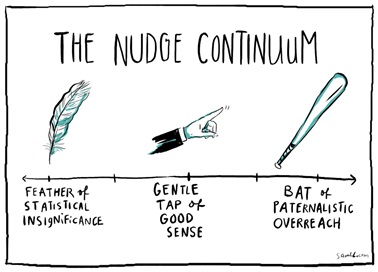
User Experience Is Not Extra. It’s Everything.
November 15, 2021
The rapid introduction many have had to online learning over the past couple of years has given us a better understanding of the impact a well-designed user experience can have on learners. More accurately, we are seeing the unfortunate negative impact of a lack of design strategy.
The requirement to transform instructional approaches from face-to-face settings to online environments in the wake of the pandemic has helped many realize that merely employing the use of a virtual classroom is no different than holding a hammer: it’s a tool, not a strategy.
Online learning is by no means a new phenomenon, but how we design online instruction for the modern learner may still be a relatively novel concept for many. The truth is that, for an online solution to be successful, the focus must be on designing and implementing a complete experience that actively engages learners from beginning to end.
How can we structure online learning to meet the unique needs of modern learners?
Today’s learners have expectations for digital learning born out of their experiences with platforms like online shopping, which allow for self-exploration through endless amounts of content and the ability to connect with others.
Long before COVID-19, online learning environments became more attractive to learners at all levels, and to employees who wanted to further their professional development skills. To this end, the rise of user experience, or UX, as a core principle of digital design has gained more urgency in the field of learning technology.
The thoughtful design of an entire user experience that meets the needs of each type of user in an online learning environment is not a value-added bonus, it is core to a successful solution. In our view, added attention on UX is not extra. It’s everything.
The Psychology of It All
An important component of successful online learning is understanding how unique learner characteristics are impacted by the learning environment. This requires us to think beyond the UX and move into the realm of the LX – or the Learner Experience.
A look into the field of psychology can provide a more in-depth understanding of learning and how emotional, cognitive, and social processes impact learners. For example, we must be mindful of how learning conditions, backgrounds, course materials, and learning tasks can all affect learning outcomes.
Learners’ levels of motivation, autonomy, and self-regulation can strongly influence their performance in online environments. When designing for online learning; we have the ability, or rather the responsibility, to design for individuals instead of averages.
In the last couple of decades, there has been a growing body of research about the persuasive power of interactive technologies, or persuasive technologies, as they have come to be called. Much of this research was focused on how these technologies were used in sales, marketing, politics, mobile apps, and online game design. This concept of persuasive technology is not about a new form of technology, rather it is about the utilization of existing tools in a manner that persuades or nudges changes in the attitude or behavior of its users.
The Persuasive Power of the Nudge
Persuasion as a learning strategy dates back to ancient Greek and Roman civilizations. Aristotle is seen as the father of persuasion. Just as persuasion took place on the streets of ancient Athens, it is still used today to present ideas and produce changes in our behavior.
Much like most forms of direct instruction, the psychology of persuasion is about convincing someone to look at a concept or subject differently or encouraging the adoption of the desired behavior. If it is accepted that the object of instruction is to impact learners’ knowledge, beliefs, and behavior and that there can be both a positive cognitive and affective learning response to persuasion, then the use of persuasion becomes inherent to the instructional process.
In accepting the position that instructors can be considered persuaders, we must also acknowledge that persuaders often use technology to amplify their message, like using a megaphone or a projector to present a lesson.
In these examples, however, these technologies cannot persuade anyone to do anything without the persuader present. The same cannot always be said of more modern forms of technology.
In the case of instructional designers utilizing technological innovations to design eLearning experiences, the persuader in many cases is no longer present and so the technology could appear to have become the persuader. In reality, the intelligence of the persuader (i.e., the instructional designer, site administrator, or even platform UX Designer) has simply been embedded into the design of the learning environment.
But don’t let the term persuasion sway you into thinking this is at all about “controlling” the experience. It is in fact just the opposite. We focus on achieving what Behavioral Science Online Magazine calls the “gentle tap of good sense” level of the Nudge Continuum.

There are four key areas to consider when seeking to nudge learner engagement and build credibility between the learners, the platform, and the overall learning experience.
- Ethos – Trust and credibility: This applies to the people involved, the content used, and the general usability of the environment.
- Kairos – Timing timing timing: Identifying the opportune moment to deliver a message can make or break the effectiveness of what is trying to be communicated. This applies to content, feedback and especially platform messaging and notifications.
- Pathos – Tone and intention: How you say it matters. Emotions drive behavior.
- Logos – Logic and proof: How you use the data matters. Sharing that data with your learners matters more. If learners feel like the platform is a social actor in the experience they will feel more comfortable engaging.
It is these four concepts that must be implemented to ensure your learners are in a learning state of mind.
Given the current generation of digital learners’ desire to have technology-enhanced learning experiences, organizations will continue to observe an increased demand for online learning opportunities.
The role of instructional designers, administrators, and industry leaders is to ensure courses, programs, and the platforms themselves are developed based on understanding the uniqueness and complexity of these digital learning experiences. This will be of utmost importance for industry leaders who are responsible for the design, implementation, and continual enhancement of a training program.
CEOs, CLOs, and COOs need to understand how to select curricula, promote leadership and professional development, and maintain a culture of excellence through up-to-date organizational development approaches.
At Learning Pool, our full suite of solutions allows us to partner with our customers at multiple points in their learning journey to support everything from platform and content to services and strategy. Get in touch to find out more.
Got a learning problem to solve?
Get in touch to discover how we can help

